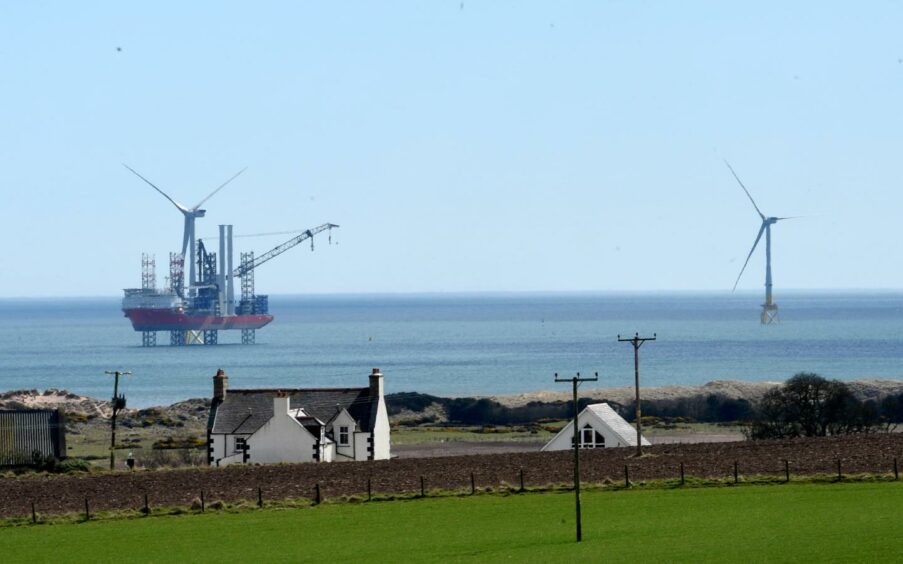
It has been more than 20 years in the making, but at last Aberdeen has got its big chance to prove that it really can become a major player in offshore renewables and especially wind.
This is not a flash in the pan situation, which it basically was when Big Oil first ventured into the North Sea. Then no-one had a clue whether there would be an oil bonanza or not and that, if there was one it would be game over in just a few years.
History guides us as to what actually happened. It really was a start-stop game … boom and bust, both in Great Yarmouth serving the Southern Gas Basin and in Aberdeen following a number of big oil finds made in quick succession; but then a series of exploration failures followed before the next wave of finds.
At various times along the decades it really did look as if downtown bar-room doom mongers would be proved right and, for sure, the North Sea oil & gas industry has suffered four major busts, with “for sale” signs sprouting like weeds each time in the smart suburbs and satellites of Aberdeen and, close to outright carnage in major offshore fabrication and engineering centres.
OK, the touchy-feely period regarding Aberdeen especially and Big Wind has in reality been far too long with Big Oil much too inward looking and dismissive of efforts made by the private-public partnership Aberdeen Renewable Energy Group especially, even after winning the battle against Balmedie golf resort interloper Donald Trump to secure the European Offshore Wind Deployment Centre Project in partnership with Swedish energy utility Vattenfall.
With climate change issue piling on the pressure coupled with two vicious global oil price crashes in the period mid 2014 through 2020-ish and the fact that the North Sea oil and gas industry was getting long in the tooth, they finally woke up.
Today, Transition is THE word in the few bars and restaurants still alive following two years of relentless hammering as a result of the covid pandemic, plus oil & gas-related misery.
Like a bunch of Rip-van-Winkles, oil & gas companies are 20 years after AREG’s soft launch in 2001 finally cottoning onto the beauties of low carbon energy, like its foreverness.
Meanwhile, speculation has of course been mounting as to who might be awarded what by Crown Estate Scotland via the hugely important 25 gigawatts ScotWind Round, with a number of consortia making capex promises to a largely backward and still too oil & gas-centric supply chain that will have to galvanise itself into action.
For example, though more than half (15GW) the ScotWind round awards are based on floating turbine technologies, there isn’t much floater experience actually resident here unless you include the operation of offshore production ships and their rig equivalents and the Kincardine wind project.
I think the top ScotWind prize for Aberdeen is unquestionably the bp and EnBW Morvern project award. It opens the door to bp placing its North Sea wind business in the city itself and which in time may even become global in its reach.
The approximately 860sq.kn lease is located around 60km off the coast of Aberdeen.
As bp/EnBW explain, “The E1 lease is in an advantaged area, allowing the partners to develop it as a fixed-bottom offshore wind project with a total generating capacity of around 2.9 gigawatts (GW), sufficient to power more than three million homes.”
It is perhaps largely down to the tough terms of engagement set by CES that Scotland is now getting the best chance it may ever get to become a credible player in the low carbon energies supply-chain based on indigenous:
· Creation and ownership of intellectual property,
· Technology R&D.
· Companies manufacturing those technologies and not merely “grunt” stuff as at present.
· Companies providing top-notch long-term servicing, repowering and decommissioning services, again based on genuinely home-grown capabilities.
We must not screw up this time though I fear this will happen. We must not repeat the massive supply chain failures associated with oil & gas, though I fear the rot is already setting in.
This is a multi-decades opportunity … measurable, predictable. So, as the bumper sticker so readily found in Houston at the time of the first oil crash in the mid-1980s and which could be found in Aberdeen and Alberta too. It said: “ ‘Please Lord, send another boom. We promise we won’t piss it away next time.”
Well, that’s the way we’re headed already!
Among the 17 consortia selected by CES, companies are of 12 different nationalities. Spain has the largest stake of any company, with fingers in six consortia.
Recommended for you
